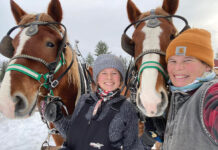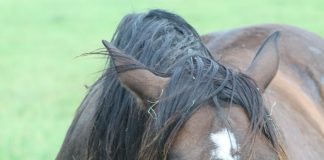Can I just say first that I don’t normally delight in killing things? Even when it comes to insects – I admire hardworking ants and have taught my kids to stand still (instead of swatting) in the presence of a bee. We relocate spiders and crickets and weathered last year’s 17-year cicadas with a heavier dose of scientific interest than disgust.

But horseflies are different.
They torment my horse with their buzzing and biting. They zing and whiz and threaten to bite for blood. They thrive in heat and wooded areas – both of which we have in abundance in Maryland in summer. My gelding, Taff, and I have bonded over the killing of horseflies lately. It goes something like this:
Him: Freeze, swivel ears, crow-hop, switch tail, dance a little jig.
Me: Step forward, eyes searching for the source of the aggravation. “If you hang on, I can get him.”
Him: Listening. Feet still, he stops his skin from twitching for just a moment. Tail hangs quiet. Ready position. He trusts I’ll do my job.
Me: Step forward, slap, curse, flick dead fly into the ether, curse again, say “ew!” and feel a momentary astonishment that I just killed that huge thing.


This post starts writing itself in my head in one of these moments. As I get busy memorializing the first dead horse fly on a piece of gravel and grabbing my camera, another gigantic horse fly buzzes by to start the blood-thirsty dance all over again. Taff and I seek refuge in the shadows of the barn.

By the time I leave the farm I have killed about 12 horse flies. Have I saved us from thousands of future generations of big biting bugs? I hope so. Meanwhile, I’ll check out this article by Cindy Hale about fly prevention and see what I can do about the ones already here.
Back to Life with Horses






flies the enemy must die at least the horse stood long enough for you to kill it